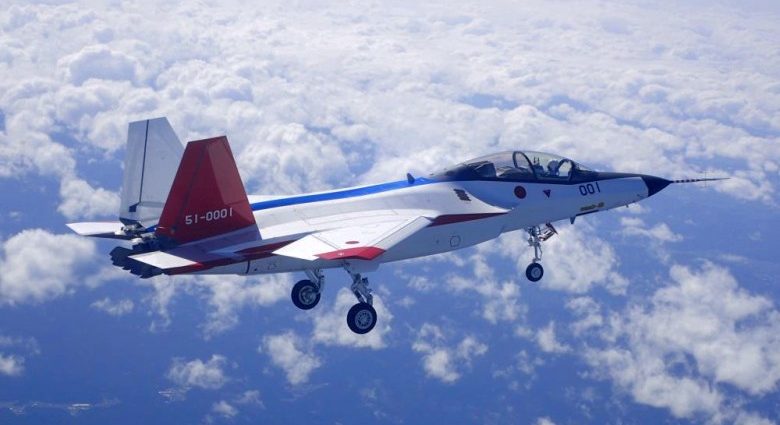Japan is mulling the use of drones for aerial interception missions as the cost of scrambling manned fighter aircraft becomes increasingly unsustainable amid intensified Chinese air incursions.
This month, Nikkei reported that the Japan Self-Defense Forces (JSDF) are considering using drones instead of manned aircraft to intercept foreign aircraft that intrude into Japan’s airspace.
The report says that Japan will this year start tests using drones to chase warships to gauge performance and functionality. If successful, drones will be tested against aircraft, the report says.
Nikkei reports that sending manned fighters to intercept intruding aircraft costs 40 times more than a comparable drone-based interception mission. It also said that Japan is considering purchasing Turkish Bayraktar TB-2 or US MQ-9 Reaper drones for the task.
The source mentions that Japan aims to send drones to identify intruding aircraft first, after which manned fighters will be scrambled if the aircraft is deemed a threat.
Japan’s plan to use drones to intercept foreign aircraft is in response to China’s rising incursions. Asia Times noted in May 2022 that China’s aerial attrition strategy aims to inflict losses on Japan by forcing it to sustain a tempo of operations beyond its capabilities.
However, this strategy can result in miscalculation and unintended escalation due to pilot and ground crew fatigue, aircraft losses via wear and tear, strained logistics and maintenance, and accidents.
The Japan Air Self-Defense Force (JASDF) is especially vulnerable to the strategy. Takahashi Kosuke notes in a February 2022 article for The Diplomat that the JASDF’s 201 F-15Js, Japan’s premier fighter since the 1980s, have suffered from a spate of accidents, slow pace of upgrade programs and potentially unfeasible upgrade costs. The F-15 base design is also set to be obsolete by 2024, which reduces room for upgrades and the potential for improved variants.
While Kosuke notes that 98 of JASDF’s newer F-15Js are slated to be upgraded through the Japan Super Interceptor (JSI) upgrade program, Japan may need more money to spend for these upgrades. In addition, he notes that Japan’s government debt, currently at 266% of GDP, among the highest worldwide, should limit how much Japan can spend to accelerate its F-15 upgrade program.

An April 2020 article by the Center for Strategic and International Studies (CSIS) think tank, meanwhile, notes the capability limitations of Japan’s 94-strong fleet of 1990s-era F-2 fighters, which are slated to be retired by the 2030s.
Those limitations owe in large part to US reluctance to share critical fighter technology with Japan during the fighter’s development, which resulted in Japan overspending to acquire what amounted to a slightly-enhanced F-16.
Although Japan is acquiring F-35s and developing its 6th-generation fighter, it faces several challenges in getting these newer aircraft into service. While Japan is slated to acquire up to 147 F-35s, Abraham Ait notes in an April 2018 article for The Diplomat that the F-35 is not an air superiority fighter and was designed more as a general-purpose combat aircraft.
Ait notes that the F-35 has a substantially larger radar cross section (RCS) than the F-22, has less than half the flight range of the latter and is underpowered and under-armed compared to the F-22 and China’s air superiority fighters, including the J-20, J-11, and Su-35.
Significantly, Japan won’t be able to acquire F-22s from the US. Asia Times noted last month that the US has never exported the F-22 due to risks of its sensitive stealth technology falling into the hands of potential adversaries and stopped production at 187 units in 2011.
This decision was due to a cost-death spiral of US$143 million per aircraft, its perceived irrelevance in protracted counterinsurgencies in Iraq and Afghanistan and based on an assumption that China and Russia would field F-22 competitors after the 2020s.
Japan has also developed indigenous fighter aircraft but those types are experimental aircraft with unclear proposals.
Asia Times noted in December 2022 that Japan developed the Mitsubishi X-2 in response to the US export ban on the F-22, with the type featuring advanced technologies such as 3D thrust vectoring for tight and fast turns and active electronically scanned array (AESA) radar.
However, the rationale behind the lone Mitsubishi X-2 prototype was to develop a demonstrator that could showcase the capabilities of Japan’s aerospace industry to build an advanced fighter and to glean insights to guide the development of Japan’s next-generation fighter.

In January 2022, Asia Times reported on Japan’s partnership with the UK and Italy to build a 6th-generation fighter, which aims to overmatch China and Russia’s 5th-generation fighters. However, Japan intends to start production of the type in 2031, with entry into service expected as late as 2035.
That long development timeline may make the type obsolete upon entering service, as Japan’s strategic environment and China’s military capabilities may have significantly evolved by then.
Japan may also face a paradox that in trying to use unmanned platforms for air defense, it may require even more manpower to do so. Breaking Defense reported last month that unmanned drones might take too many people to operate, noting that an Apache attack helicopter requires 30 people while a Grey Eagle drone needs 135. This problem may carry over to Japan’s plans to use drones for aerial interception missions.
Meanwhile, the JSDF faces recruitment problems amid Japan’s fast-graying demographics. This January, Japan Times reported that the JSDF is struggling to fill recruitment quotas due to Japan’s declining birthrate, competition with the private sector, perceptions that the JSDF provides a low quality of life, a low unemployment rate and an enduring post-World War II pacifist tradition.
The report notes that those trends may make the JSDF a high-tech but hollow force bereft of quality personnel that understands and are prepared for the demands of modern warfare, such as using unmanned systems for air interception missions.

